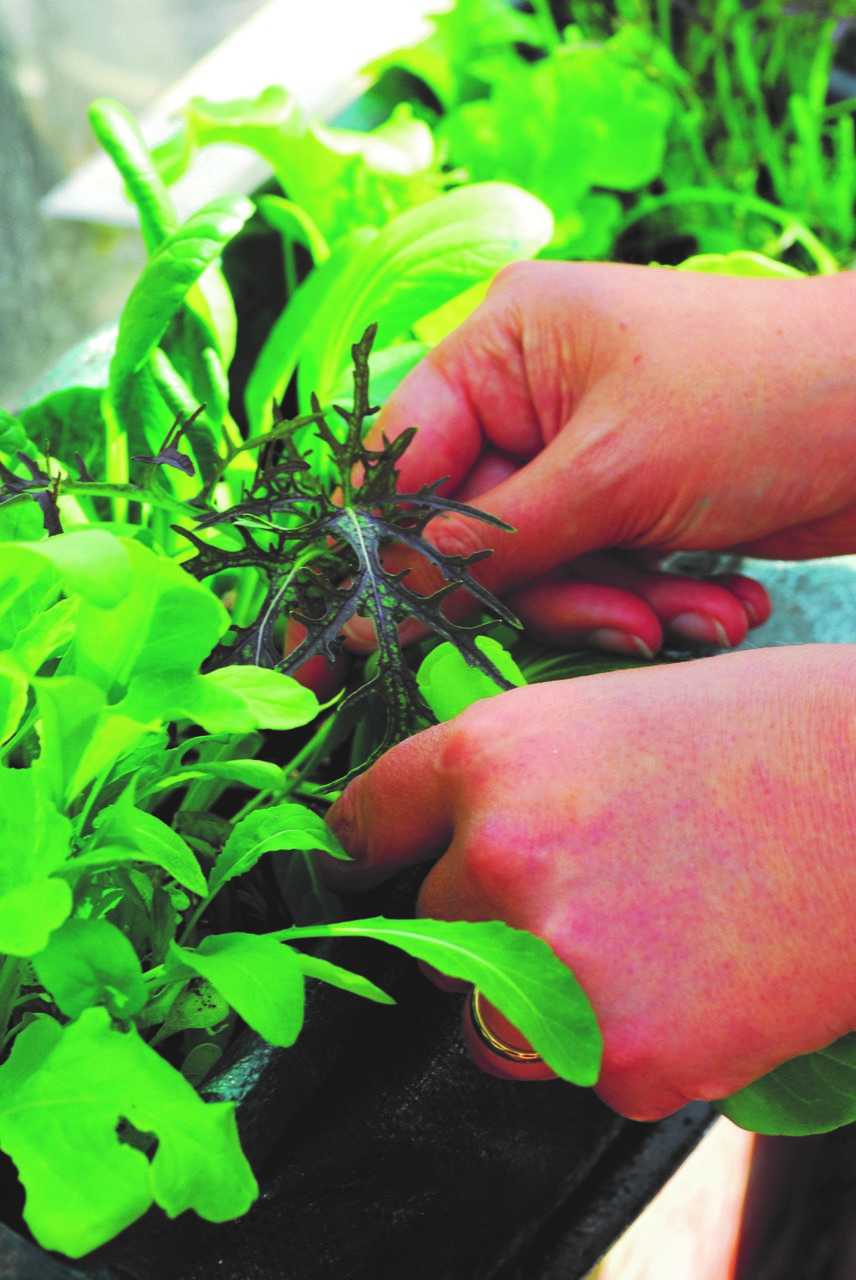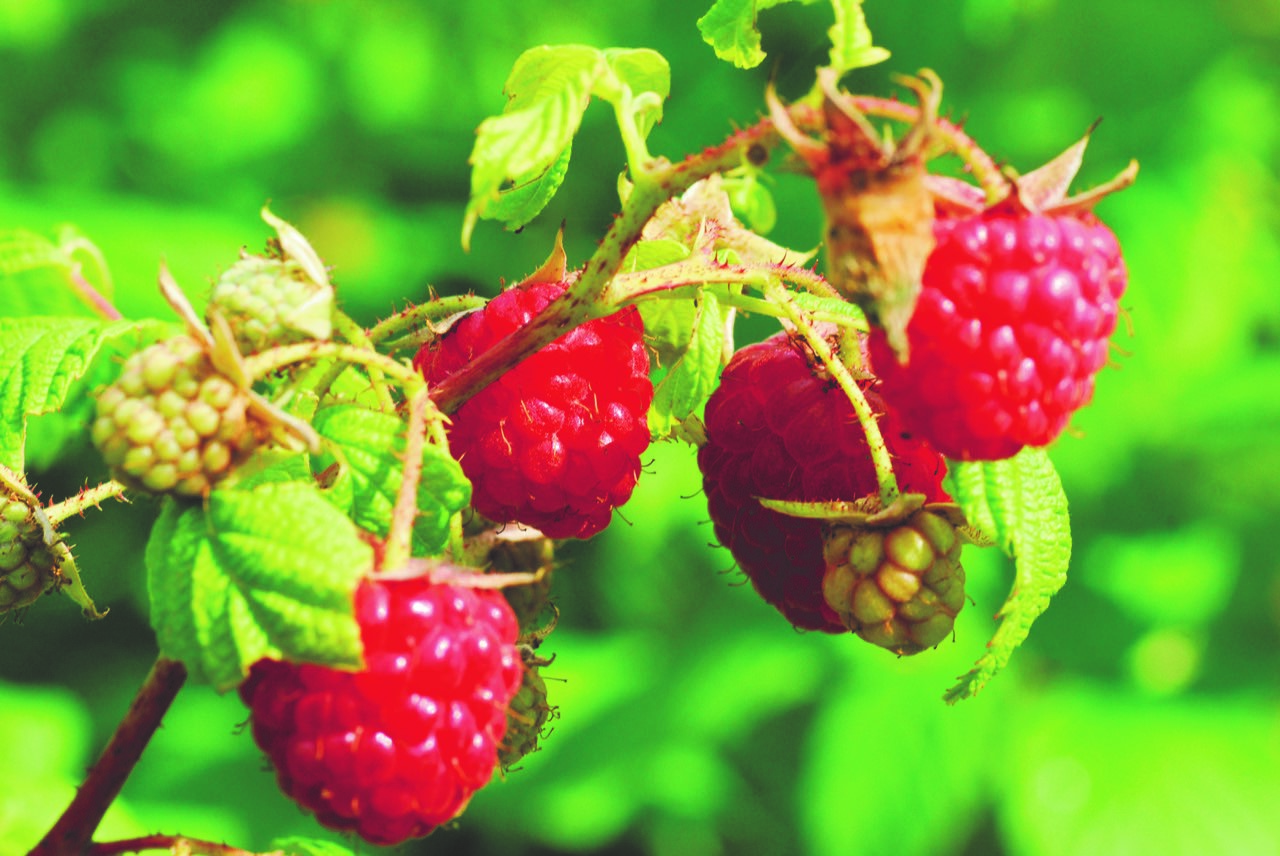
Grow your own has been on-trend for a while now, but this year with all the uncertainty of Brexit and indeed the increases in food prices, growing food for the table is ever more popular.
You don’t need an allotment to grow veg. You don’t even need a veg patch. A raised bed or some large pots, or even a few grow bags are enough to grow a small harvest of food. You can grow from seed or if you are new to growing things, then visit the garden centre and buy some of the garden ready veg plants that will be in stock now. Many are hardy – that means you can plant them out now. Some are not and will need protection from the cold until the last chance of frost has passed. If you are not sure, ask advice at your plant cetnre and delay buying any tender (not hardy) plants until mid to late May when it should be safe to plant outside.
Salady things

If you buy bags of salad from the supermarket – STOP! You’d be amazed at what you can grow in pots and containers. From spicy mustards and rocket, to lettuce, oriental greens and more. Not forgetting that you can also eat the leaves of many other vegetables such as garlic, broad beans, peas, mange tout, beetroot, broccoli and more. So if you are growing other veg check to see whether the leaves are edible too. Don’t forget that many veg you might otherwise cook such as kale, spinach and chard can also be harvested as young leaves for salads. In fact you can pick a bowl of salad and actually not have a single lettuce leaf in there if you want. If you are starting out, choose a mixed packet of salad leaves and sow them on the surface of the compost in a large pot. Cover with a very thin layer of compost and water gently. As soon as the leaves are large enough to handle you can start to pick
them and eat them.
Beans beans beans
I just love beans and they are ideal for large containers. If you want to grow runner beans then you need plenty of depth for the roots and a support to grow the plants up for they clamber tall – just think of Jack and the bean stalk. But you can make a wigwam from bamboo canes or place the planter in front of a trellis. You can also grow climbing French beans. If you haven’t got the vertical space for support then choose dwarf French beans. They are ideal for large window boxes, grow bags and containers and will make a lot of pencil thin beans. Both runner beans and French beans are not hardy, so don’t plant them out until late May. But both are incredibly easy to grow from seed, so buy a packet from the garden centre and sow some in pots on the windowsill. Don’t sow them all, keep some for successional sowing or in case yours don’t germinate for some reason (they will). Sow a few more in June for a later harvest.
Brexit proof – Courgettes
If you want to grow one plant that will feed the five thousand this summer choose courgettes. It’s the Brexit proof crop that will keep you, your family and probably all the neighbours supplied with courgettes all season. You can buy plants or grow from seed. They are very easy. They need a large planter per plant with plenty of room for the roots, but they will produce tasty fruits all summer. Pick them while they are small and enjoy them, you can also eat the flowers! Keep them well watered when it’s hot and sunny and give them space to grow. Choose a bush variety for pots that won’t clamber and trail all over the garden.
Full of flavour -Fruit
It’s not just veg that can be grown in pots. Many types of fruit can be grown in containers for a good harvest. Blueberries are ideal, as they prefer an acid soil, which you can provide with ericaceous compost. Strawberries are also great for pots, or use a strawberry planter. Raspberries can be confined to a large pot where they will fruit in the summer and even blackberries can be pot grown and then trained up a suitable support. A large planter can become home to a small apple, pear or peach tree and you will get a small harvest each year.
Herbs – designed for beginners

Starting out? Buy a few potted herbs. Then either make a herb planter with a few in one container, or pot each one into a slightly bigger planter and cluster them together. Use the leaves in salads, stir-fries, sandwiches, omelets and in sauces. If you are not sure what to grow, then choose a mint and use the leaves make mint tea, mint sauces and fabulous concoctions from the fragant foliage. Easy peasy and great for pots and containers.


